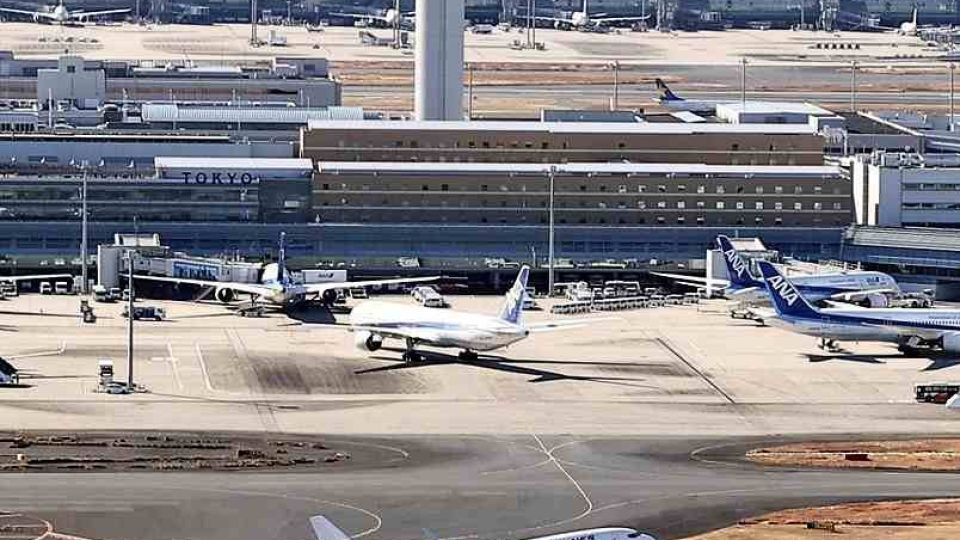January 10, 2024
TOKYO – The recent collision between a Japan Airlines jetliner and a Japan Coast Guard plane at Haneda Airport in Tokyo may have been caused by a combination of factors, including the JCG side misunderstanding instructions from air traffic control.
Tuesday marked one week since the fatal accident. This article explores the main points of the investigation into the JCG plane, air traffic control at Haneda and the JAL plane.
JCG aircraft
“Multiple safety measures are implemented at airports, including a system so that mistakes or wrong actions will be noticed by others. However, we need to swiftly consider measures to prevent the recurrence of such an incident, based on the cause of the accident,” a senior official at the Land, Infrastructure, Transport and Tourism Ministry emphasized.
Two minutes before the collision, an air traffic controller told the JCG aircraft to taxi to holding point C5 next to Runway C, and the JCG side repeated the instruction, according to the air traffic control tower’s communication records released by the ministry on Jan. 3.
The JCG plane was not given permission to enter the runway, but the 39-year-old captain of the JCG aircraft stated during questioning on Jan. 2, the day of the collision, “I thought I had been given permission to enter the runway.” The captain appears to have misunderstood the instructions.
The air traffic controller’s instructions were heard by the captain and the crew on board the JCG plane. Repeating instructions and having several crew members confirm them are part of measures to ensure safety in multiple ways, but these steps apparently did not work in the latest accident.
Over the 15 years through 2023, there have been 33 cases of wrongful entry into runways at Japanese airports. A source close to the ministry cited an incident at Naha Airport in Okinawa in June 2018 as a case similar to the Jan. 2 accident.
In the 2018 incident, two Air Self-Defense Force F-15 fighter jets, which were ready to scramble, were told by an air traffic controller at the airport to stop short of the runway because there was an aircraft on its final approach. The two fighter jets repeated the instruction, but both entered the runway.
The air traffic controller noticed the aircraft and instructed them to leave the runway, but a civil aircraft came within 2,450 meters of the ASDF planes.
Aircraft that are scrambling are given priority for takeoff as long as they do not impede the safety of other airplanes. The Japan Transport Safety Board, which investigated the incident, pointed out such factors and determined that the ASDF flight leader had wrongly thought they were given permission to “wait on the runway,” while the actual instruction was to “wait next to the runway.”
The JCG plane that was struck on Jan. 2 was to transport supplies to areas hit by the massive Noto Peninsula Earthquake. It was given priority to take off before a civilian airplane that was waiting near Taxiway C1 at the south end of the runway.
It was noted that the flight leader and others of the ASDF plane had been hurrying under time constraints, which led to misjudgments. The investigation by the JTSB also focused on why the misunderstanding occurred, including the state of mind of the crew members and communication among the crew at the time of the incident, taking into account the hierarchical relationships among them.
Air traffic control
The JCG plane was on the runway for about 40 seconds until the collision on Jan. 2. Was it impossible for air traffic control to be aware of the error?
At Haneda Airport, two air traffic controllers are in charge of each runway in operation. There are also other staff such as a supervisor and assistants, and the air traffic control center is usually staffed by about 15 people overall.
Seven airports, including Haneda, have runway occupancy monitoring support, which watches for wrongful entry into runways. Under the system, if another aircraft enters a runway when a plane is approaching to land, the runway is lit up in yellow on a monitor at air traffic control and the airplanes are displayed in red. This system was operating normally at the time of the accident.
“Haneda Airport is crowded. It is not presumed that air traffic controllers will continuously monitor the same airplane, and this is also the case at overseas airports,” a senior official at the ministry’s Civil Aviation Bureau stressed.
“When a controller instructs an airplane to come to a halt before the stop line, that controller issues instructions to other planes on the assumption that the airplane has stopped. They work under this principle of trust.”
The support function is designed to provide visual assistance for controllers, and they are not expected to keep their eyes fixed on the monitor display, according to sources.
However, it is unclear why air traffic controllers did not notice the entry of the JCG plane onto the runway either by looking at the runway with their own eyes or by checking the display. The ministry on Saturday established a new position in charge of watching the monitor at all times.
JAL aircraft
According to Sadao Tamura, a former All Nippon Airways captain, it is possible to make a “go-around,” or aborted landing, as long as the wheels of the aircraft have not touched the runway.
The JAL aircraft did not try to make a go-around. The JAL captain and others reportedly told in-house investigators that they could not visually confirm the presence of the JCG aircraft, and that they saw something for a moment just before the collision.
The latest accident occurred after sunset. Pilots are said to have difficulty seeing the bodies of aircraft at night, although they can make out runways and the lights on other planes.
However, Tamura said, “There is a possibility that they could have seen the JCG plane with their own eyes during the about 40 seconds it was on the runway.”

